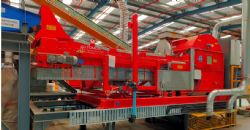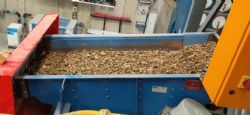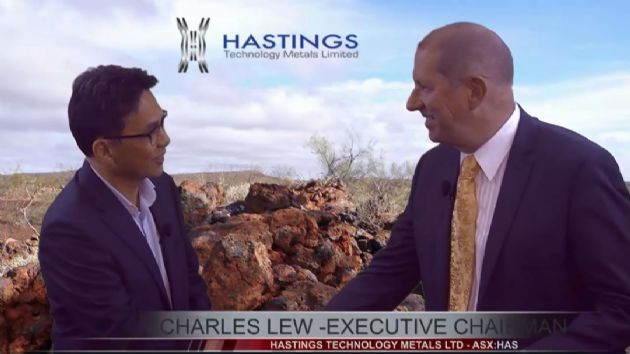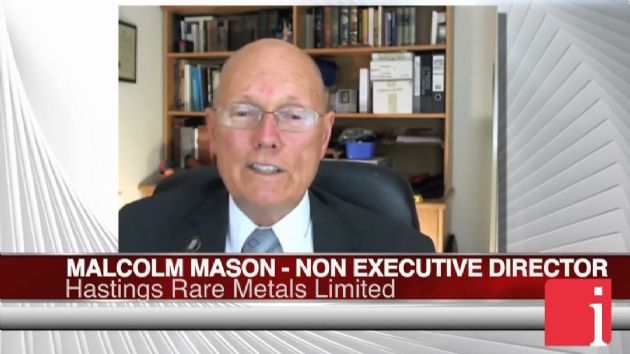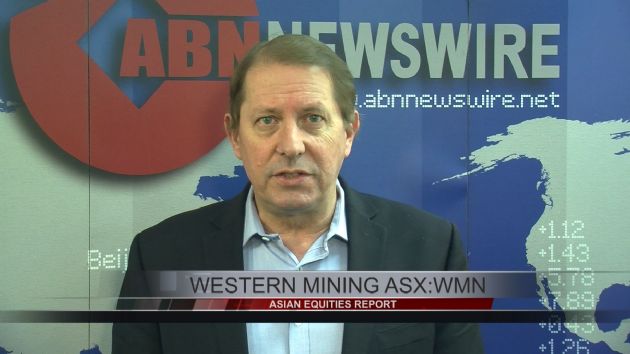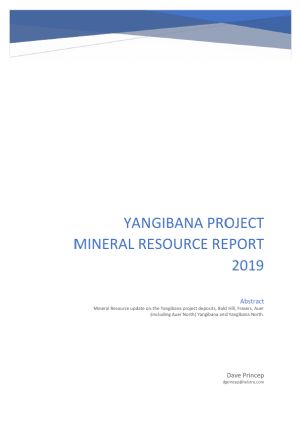95% RECOVERY of ORE and 52% IMPROVEMENT IN HEAD GRADE FROM BULK ORE SORTING TRIAL
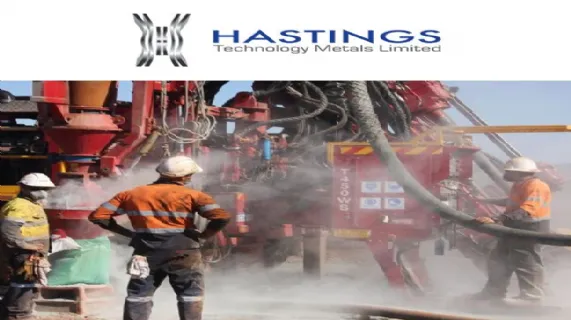
Bulk Ore Sorting Trial Shows Outstanding Results
Perth, Nov 25, 2019 AEST (ABN Newswire) - Hastings Technology Metals Limited ( ASX:HAS) (
ASX:HAS) ( 5AM:FRA) is pleased to announce successful completion of bulk sample testing through an ore sorting circuit. These outstanding results confirm earlier results from smaller drill core derived samples, which were tested with two different ore sorter vendors.
5AM:FRA) is pleased to announce successful completion of bulk sample testing through an ore sorting circuit. These outstanding results confirm earlier results from smaller drill core derived samples, which were tested with two different ore sorter vendors.
- 95.1% recovery of contained Nd2O3+Pr6O11 on 1.8 tonne sorted bulk sample.
- 52% increase in head grade from 0.71% to 1.08% Nd2O3+Pr6O11.
- 37.1% of the sample mass rejected from ore sorting testwork.
- Standard commercial ore sorting technology, X-Ray transmission (XRT), has proven to be extremely effective at removing dilution on samples used in the testing program.
- Technical and engineering programs will continue to investigate the operating scenarios where benefits can be realised for the project.
Previous small-scale test work has shown that off-the-shelf x-ray transmission (XRT) ore sorting technology could be applied to separate out a barren waste stream from the ore. This presents an opportunity to remove waste dilution material from the mining process before the material is fed into the processing plant, potentially resulting in energy and reagent savings in the beneficiation circuit.
The crushed bulk ore sample of 1.8 tonnes was screened into two size fractions -10.5mm and +10.5mm. The sortable fraction (+10.5mm) after being diluted with waste material at either 35% or 60% proportions was screened on a Tomra commercial sorter using XRT technology at 32 tonnes per hour feed rate.
In the base case sorted ore sample, crushed and screened to +10.5mm and diluted with 35% waste material, a total of 37.1% of the sample mass was rejected at a grade of 0.09% Nd2O3+Pr6O11, representing a loss of Nd2O3+Pr6O11 of just 4.9% or an overall recovery of 95.1% Nd2O3+Pr6O11 in the Ore. A corresponding 52% increase or upgrade in the ore head grade was achieved from 0.71% to 1.08% Nd2O3+Pr6O11.
In the sorted sample diluted with 60% waste material, the ore sorting test work program achieved an upgrade factor of 2.16 taking the feed grade from 0.43% Nd2O3+Pr6O11 to 0.93% Nd2O3+Pr6O11, whilst recovering 90.6% of the Nd2O3+Pr6O11.
The sorting tests of the sortable fraction showed that the standard commercial Tomra technology was able to successfully sort the Yangibana ore using XRT technology.
Andrew Reid, Hastings Chief Operating Officer, said "the Yangibana orebody continues to amaze us. Not only with its world-class ratios of Nd2O3+Pr6O11, but now these results have confirmed that ore sorting presents a real and future prospect to gain higher operational efficiencies from the Yangibana Processing Plant"
Detailed quantitative mineralogy is pending on the ore sorting waste stream. However, the results indicate that the REO rejected in the ore sorter waste stream is not composed heavily with liberated monazite, but rather with low-grade REO intergrowths which would not be recovered in the flotation process. The benefit for the Yangibana project is in removing this barren gangue early in the process flowsheet, with potential benefits gained in streamlining the efficiency of the beneficiation plant.
The full opportunity for including ore sorting technology into the Yangibana process flowsheet is still being assessed. Based on these testwork results, technical and engineering programs will continue to investigate the benefits that can be realised across the project.
To view tables and figures, please visit:
https://abnnewswire.net/lnk/B7W4755I
About Hastings Technology Metals Ltd
 Hastings Technology Metals Ltd (ASX:HAS) (FRA:5AM) is advancing its Yangibana Rare Earths Project in the Upper Gascoyne Region of Western Australia towards production. The proposed beneficiation and hydro metallurgy processing plant will treat rare earths deposits, predominantly monazite, hosting high neodymium and praseodymium contents to produce a mixed rare earths carbonate that will be further refined into individual rare earth oxides at processing plants overseas.
Hastings Technology Metals Ltd (ASX:HAS) (FRA:5AM) is advancing its Yangibana Rare Earths Project in the Upper Gascoyne Region of Western Australia towards production. The proposed beneficiation and hydro metallurgy processing plant will treat rare earths deposits, predominantly monazite, hosting high neodymium and praseodymium contents to produce a mixed rare earths carbonate that will be further refined into individual rare earth oxides at processing plants overseas.
Neodymium and praseodymium are vital components in the manufacture of permanent magnets which is used in a wide and expanding range of advanced and high-tech products including electric vehicles, wind turbines, robotics, medical applications and others. Hastings aims to become the next significant producer of neodymium and praseodymium outside of China.
Hastings holds 100% interest in the most significant deposits within the overall project, and 70% interest in additional deposits that will be developed at a later date, all held under Mining Leases. Numerous prospects have been identified warranting detailed exploration to further extend the life of the project.
Brockman Project
The Brockman deposit, near Halls Creek in Western Australia, contains JORC Indicated and Inferred Mineral Resources, estimated using the guidelines of JORC Code (2012 Edition).
The Company is also progressing a Mining Lease application over the Brockman Rare Earths and Rare Metals Project.
Hastings aims to capitalise on the strong demand for critical rare earths created by the expanding demand for new technology products.
| ||
|



